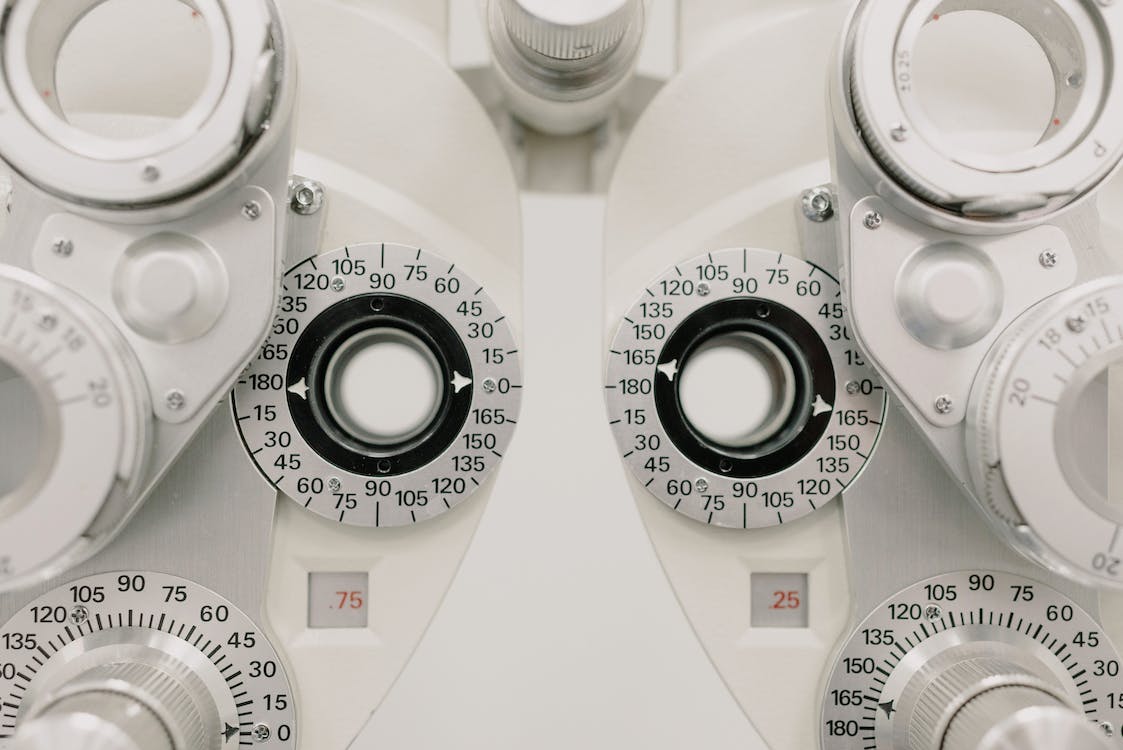
Eye care technology has come a long way in the last few years, and it's making a huge difference in the lives of people all over the world.
The development of new technologies has helped those who have been living with eye problems for years to finally find relief. It's also improved our understanding of how to treat many common eye conditions.
In this article, we'll take a look at some of the most exciting advancements in eye care technology that have been made recently.
#1 Advanced Phoropter
A phoropter is a device that helps doctors determine the power and type of lens needed to correct your vision. It typically has a series of lenses that can be adjusted and rotated in front of your eyes. The doctor will ask you to read the eye chart through each lens and then adjust the lens until you have clear vision.
This process is repeated with each lens in turn until a pair of lenses is found that allows you to see clearly at all distances (near, intermediate, and far).
The Advanced Phoropter is an improvement on this traditional device. It uses laser technology to project text onto a screen in front of the patient's face, allowing him or her to read it without having it printed on paper beforehand.
This allows the doctor to make adjustments more quickly than with traditional phoropters, improving your experience as a patient and saving valuable time overall. You can basically complete your eye exam within a few minutes and head off to the nearest eye glass store to get a pair of glasses or contact lenses as prescribed by your doctor.
#2 Advanced Imaging
Advanced imaging is a type of eye care technology that helps detect and diagnose various eye diseases. It is also used to measure the health of the eyes and overall vision.
This type of technology uses light, infrared, or radio waves to create an image of the inside of your eye. This includes the retina, optic nerve, and other parts of your eye. The images are then analyzed by a computer to provide information about any abnormalities in your eyesight. The results from this test can be used by doctors to determine the best course of treatment for you.
#3 Robotic-Assisted Microsurgery
Market Research Future states that the global robotics market will reach the $214.68 billion mark by 2030. That means with time, robotics is spreading out into various branches of industry and medical sciences. Robotic-assisted microsurgery is one such advancement.
This technique allows surgeons to perform delicate procedures on the eye, including cataract extraction and corneal transplantation, with greater precision and accuracy than ever before. The robot's arm is connected to a camera that allows the surgeon to see what he or she is doing in real time. That means less time for patients to wait for surgery, fewer errors during surgery, and faster recovery times for all involved.
#4 Retinal Gene Therapy
Retinal Gene Therapy is a new, noninvasive treatment for eye diseases. It uses gene therapy to treat age-related macular degeneration (AMD) and retinitis pigmentosa (RP).
In this treatment, a virus containing a healthy copy of the gene that causes AMD or RP is injected into the eye. The virus then delivers the healthy gene directly to the retina.
The benefits of Retinal Gene Therapy are many: it's noninvasive, relatively safe, has few side effects, can be used to treat people who have already lost all sight in one eye, and can even help prevent vision loss.
#5 AI-Based Screening for Diabetic Retinopathy
The International Data Corporation (IDC) predicts that worldwide spending on AI and AI-centric systems will reach $118 billion by 2022. Medical sciences won’t be excluded from these spendings. AI-based solutions to medical problems are being studied and also applied on various scales.
Diabetic retinopathy is an eye disease that often causes vision loss or blindness. It can be treated with laser therapy, but it’s important to catch it early on if you have diabetes. AI-based screening for diabetic retinopathy uses advanced image processing algorithms to examine photos of the retina and identify signs of disease.
This process is much faster than manual examination, allowing doctors to monitor more patients at once and catch issues earlier.
#6 Nanotechnology
According to Valuates Reports, the global nanotechnology market will reach a value of $33.63 billion by 2030. A lot of this growth is being made possible due to the applications of nanotech in various industries. Medical science is one of those areas.
Nanotechnology has been used in many different ways in eye care. It can be used to make contact lenses thinner and more transparent, so they will feel more comfortable on your eyes. They can also be used to create new contact lenses with built-in sensors that tell you when you need new glasses or contacts, so there's no guesswork involved anymore!
There are many advancements in eye care technology that you need to know about, and they can help make your life easier. You can be sure that the benefits of these new technologies are worth it.